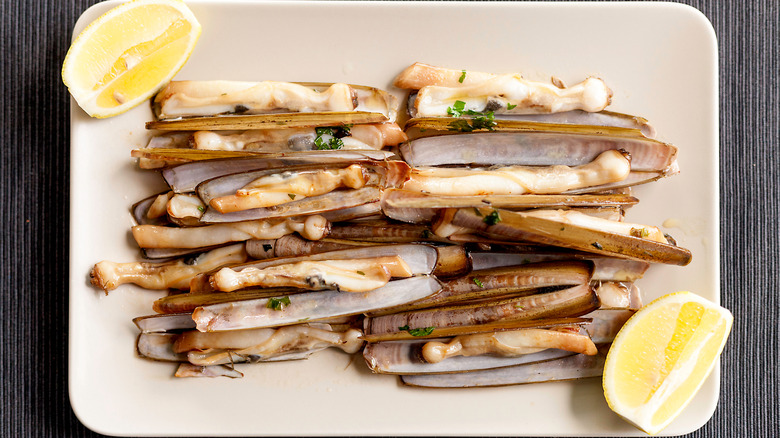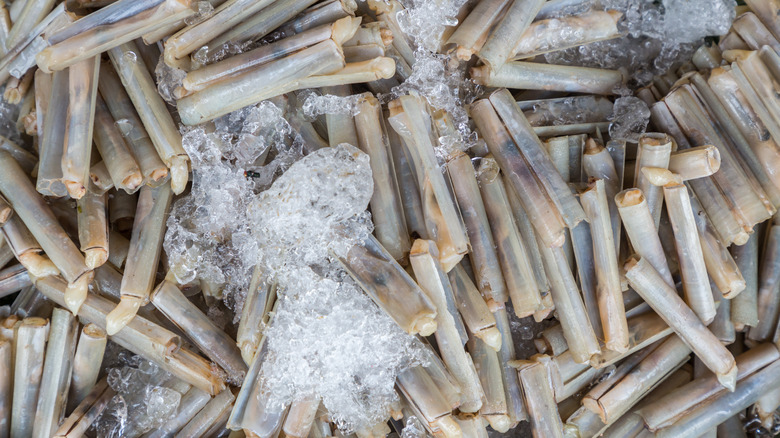What To Look For When Purchasing Razor Clams
While most people are familiar with clams and dishes like clam chowder, many might not know that there are over 15,000 types of clams worldwide, according to the Massachusetts Division of Marine Fisheries. One lesser-known variety is the Pacific razor clam, a type commonly found in the Pacific Northwest. This region of the U.S. is famous for its fresh shellfish, which is evident in the amount of high-quality seafood restaurants there. These establishments boast delicacies like calamari strips, crab mac and cheese, halibut tacos, and much more.
To the rest of the country, the razor clam may be somewhat of a novelty. Compared to other clams, these ones are long and skinny, and the flesh inside pokes out the end. Great British Chefs notes that the flesh is more similar to squid than to other types of clams. The Pacific razor clam can be up to six inches long, and must be harvested right before low tide when its imprints in the sand are visible, according to Serious Eats. As with any other clam, they can be seared, grilled, sautéed, or poached, and some even eat them raw (via Pangea Shellfish).
When preparing any seafood, it's important to make sure you're eating it safely to avoid foodborne illnesses. And when buying razor clams, there is one crucial factor to keep in mind.
Buy clams alive to ensure freshness
It's important to buy live clams. According to Striped Spatula, they can grow bacteria quickly once they die. Although it may sound gruesome, you essentially want to cook your clams while they're still alive. To ensure they can breathe on the way home, it's best to transport them in a mesh bag or a container that allows air exposure.
Razor clams are no exception to this rule. Great British Chefs advises to ensure yours are alive before buying them, which you can test by poking the part of the flesh that sticks out of the shell. If the clam wiggles and retreats back in its shell, that's a sure sign its reflexes are intact and it's still living. Another way to check is to tap on any open clams' shells -– if they're alive, they should close once touched, Azzopardi Fisheries notes. They'll drown if they're completely submerged in water, so it's usually best to cook them right away. If you have to store them, Pangea Shellfish recommends placing them in the fridge under a damp towel.
Once you've checked off all these boxes, you'll want to make sure the clams didn't bring any sand home with them or else that will end up in your dinner too. Serious Eats notes that store-bought clams may already be clean, but if not, just give them a quick rinse, making sure not to dump the washed ones in a water bucket.

